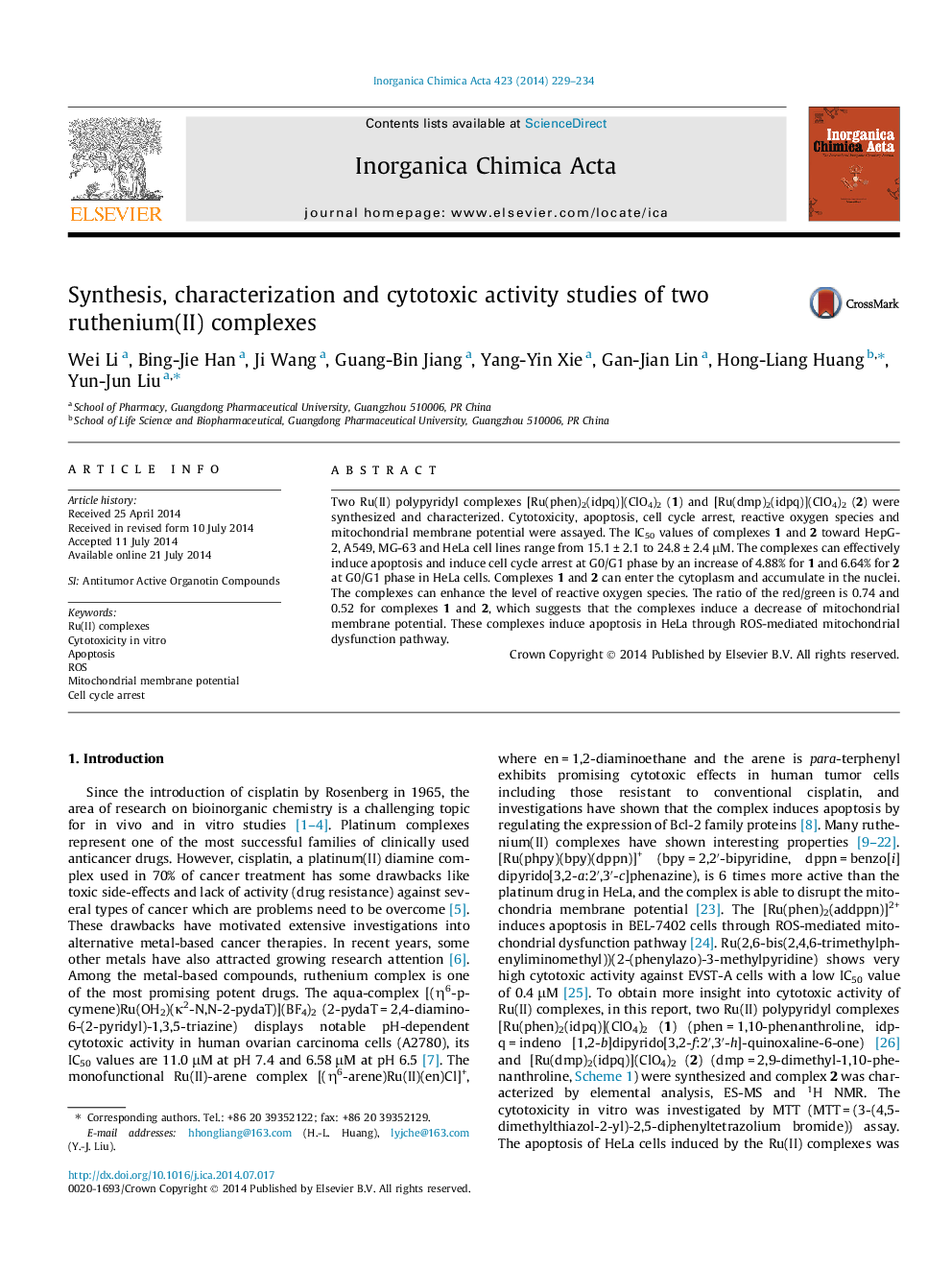| Article ID | Journal | Published Year | Pages | File Type |
|---|---|---|---|---|
| 1309361 | Inorganica Chimica Acta | 2014 | 6 Pages |
•Two ruthenium complexes [Ru(phen)2(idpq)](ClO4)2 (1) and [Ru(dmp)2(idpq)](ClO4)2 (2) were synthesized and characterized.•The cytotoxicity in vitro of complexes 1 and 2 against HepG-2, HeLa, MG-63 and A549 cell lines was investigated.•The apoptosis and the cellular uptake in HeLa cells induced by 1 and 2 were investigated by fluorescence microcopy.•The levels of ROS and the changes of the mitochondrial membrane potential were assayed.•The cell cycle arrest was investigated by flow cytometry.
Two Ru(II) polypyridyl complexes [Ru(phen)2(idpq)](ClO4)2 (1) and [Ru(dmp)2(idpq)](ClO4)2 (2) were synthesized and characterized. Cytotoxicity, apoptosis, cell cycle arrest, reactive oxygen species and mitochondrial membrane potential were assayed. The IC50 values of complexes 1 and 2 toward HepG-2, A549, MG-63 and HeLa cell lines range from 15.1 ± 2.1 to 24.8 ± 2.4 μM. The complexes can effectively induce apoptosis and induce cell cycle arrest at G0/G1 phase by an increase of 4.88% for 1 and 6.64% for 2 at G0/G1 phase in HeLa cells. Complexes 1 and 2 can enter the cytoplasm and accumulate in the nuclei. The complexes can enhance the level of reactive oxygen species. The ratio of the red/green is 0.74 and 0.52 for complexes 1 and 2, which suggests that the complexes induce a decrease of mitochondrial membrane potential. These complexes induce apoptosis in HeLa through ROS-mediated mitochondrial dysfunction pathway.
Graphical abstractTwo Ru(II) complexes [Ru(phen)2(idpq)]2+ (1) and [Ru(dmp)2(idpq)]2+ (2) have been synthesized and characterized. Their cytotoxicity in vitro, apoptosis, ROS, mitochondrial membrane potential and cell cycle arrest were investigated.Figure optionsDownload full-size imageDownload as PowerPoint slide
